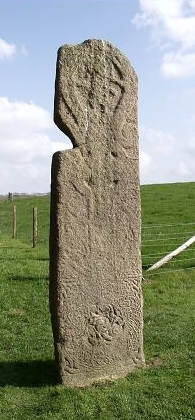Firlot on:
[Wikipedia]
[Google]
[Amazon]
 The firlot was a
The firlot was a
 The firlot was a
The firlot was a dry measure
Dry measures are units of volume to measure bulk commodities that are not fluids and that were typically shipped and sold in standardized containers such as barrels. They have largely been replaced by the units used for measuring volumes in the me ...
used in Scotland. For centuries it was the primary measure for all grains sold in the country. In the Scottish system a firlot was equal to 4 peck
A peck is an imperial and United States customary unit of dry volume, equivalent to 2 dry gallons or 8 dry quarts or 16 dry pints. An imperial peck is equivalent to 9.09 liters and a US customary peck is equivalent to 8.81 liters. Two pecks mak ...
s, and the boll
Boll may refer to:
*Boll (surname)
*Scottish units#Dry volume, Boll, an obsolete Scottish measure of volume
*BOLL, a protein in humans
*7873 Böll, a main-belt asteroid
*Boll case, a 1958 International Court of Justice case
*Boll KG, Uwe Boll's p ...
was equal to 4 firlots.
The first attempt of the Scottish Parliament
The Scottish Parliament ( gd, Pàrlamaid na h-Alba ; sco, Scots Pairlament) is the devolved, unicameral legislature of Scotland. Located in the Holyrood area of the capital city, Edinburgh, it is frequently referred to by the metonym Holyro ...
to define the firlot was in 1426. They set it as 1,200 Scottish cubic inches or 19.98 litres, but effectively the exact volume continued to be defined by local custom and varied across the country.
Over the years the common definition seems to have increased. By an Act of Parliament of Scotland of 1617, the commissioners' firlot of Linlithgow
Linlithgow (; gd, Gleann Iucha, sco, Lithgae) is a town in West Lothian, Scotland. It was historically West Lothian's county town, reflected in the county's historical name of Linlithgowshire. An ancient town, it lies in the Central Belt on a ...
was made the standard for the whole of Scotland, but, in fact, two units were defined for different commodities. The first, which “contained 21 pints and a mutchkin
''Disambiguation: a "mutchkin" can also refer a close-fitting Scottish cap''.
The mutchkin ( gd, mùisgein) was a Scottish unit of liquid volume measurement that was in use from at least 1661 (and possibly as early as the 15th century) until the ...
of the water of Leith
The Water of Leith (Scottish Gaelic: ''Uisge Lìte'') is the main river flowing near central Edinburgh, Scotland, and flows into the port of Leith where it flows into the sea via the Firth of Forth.
Name
The name ''Leith'' may be of Britto ...
,” (approximately 35 litres) was for wheat
Wheat is a grass widely cultivated for its seed, a cereal grain that is a worldwide staple food. The many species of wheat together make up the genus ''Triticum'' ; the most widely grown is common wheat (''T. aestivum''). The archaeologi ...
, pea
The pea is most commonly the small spherical seed or the seed-pod of the flowering plant species ''Pisum sativum''. Each pod contains several peas, which can be green or yellow. Botanically, pea pods are fruit, since they contain seeds and d ...
se, beans, rye, and white salt, commodities which had been sold by striken, or level measure. The second firlot, which contained 31 pints of water, about 50 litres, was for oats
The oat (''Avena sativa''), sometimes called the common oat, is a species of cereal grain grown for its seed, which is known by the same name (usually in the plural, unlike other cereals and pseudocereals). While oats are suitable for human con ...
, barley
Barley (''Hordeum vulgare''), a member of the grass family, is a major cereal grain grown in temperate climates globally. It was one of the first cultivated grains, particularly in Eurasia as early as 10,000 years ago. Globally 70% of barley pr ...
and malt
Malt is germinated cereal grain that has been dried in a process known as " malting". The grain is made to germinate by soaking in water and is then halted from germinating further by drying with hot air.
Malted grain is used to make beer, wh ...
, which had been sold by heaped measure. The pint mentioned is the Scottish Sterling jug.
The measure became less common in 1696 when laws were passed requiring all oatmeal to be sold by weight rather than measure. It finally disappeared with the introduction of Imperial unit
The imperial system of units, imperial system or imperial units (also known as British Imperial or Exchequer Standards of 1826) is the system of units first defined in the British Weights and Measures Act 1824 and continued to be developed thro ...
s by the Weights and Measures Act 1824
Weights and measures acts are acts of the British Parliament determining the regulation of weights and measures. It also refers to similar royal and parliamentary acts of the Kingdoms of England and Scotland and the medieval Welsh states. T ...
.
See also
*Obsolete Scottish units of measurement
Scottish or Scots units of measurement are the weights and measures peculiar to Scotland which were nominally replaced by English units in 1685 but continued to be used in unofficial contexts until at least the late 18th century. The system was ...
References
{{reflist Units of volume Obsolete Scottish units of measurement